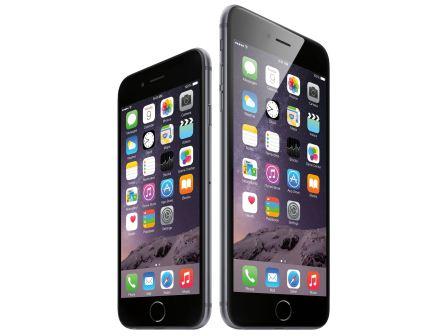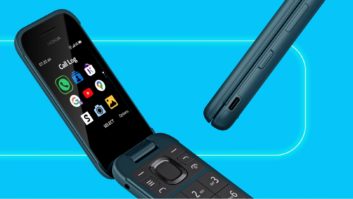
People often joke that the phone is the worst app on the smartphone these days — and it’s a fair dig. The third-party apps most of us have installed know who we’re friends with, what’s on our calendar, when we’ll arrive at our destinations, and even what we’re eating and watching on TV. The phone devices they run on have smarter and smarter sensors and operating systems — sensors and data at the device/OS level can measure our physical activity, figure out when we’re getting into a car, and even tell when we’re asleep.
So why is it so hard to make a plain old phone call and actually talk to someone? More generally, why isn’t the phone number smarter at the network level?
Despite the rising popularity of over-the-top (OTT) messaging apps like Snapchat and Facebook’s Messenger, phone calls and SMS remain the go-to forms of communication for many situations. We text our friends and family, and now also use SMS to run our dating lives, make lunch plans with our colleagues, and manage our small businesses. When we apply for jobs, sell items on Craigslist, and swap info on a dating app or Airbnb, we’re giving out numbers, not Snapchat handles. I’ve never seen an e-commerce order form ask to be my Facebook friend.
But using traditional phone network numbers is increasingly fraught with unnecessary friction and annoyances. Each time we give out our number in a transaction, it’s going into another database, or on another website, where it can be aggregated, scraped, sold, hacked, socially engineered, or just plain spammed.
Every customer who has my private cell phone line is one more person who can text me just as I’m falling asleep, or call me in the middle of the night when I’m in another time zone. The phone number gets personal, too — just ask anyone who’s been hassled or abused in the online dating scene.
These problems, of course, are exacerbated by the fact that our mobile phones have become our digital spouses, with us and on 24/7.
So why can’t carrier phone numbers help solve these issues at the network level? The technology exists to block abuse and detect spam behavior patterns in a network. Your phone knows when you’re driving and could stop texts from going through at that time, while image-recognition technology can detect with high confidence when pictures have pornography in them to block inappropriate messages. It’s equally possible for your phone to watch and remember behavior patterns, like when you always screen calls from certain people or companies, or when you are obviously in a meeting.
Email helps prove the point that these things are doable in a messaging network: All the large-scale email providers have great spam filters, message management tools (folders, tags, snooze, etc), and take advantage of big data and machine learning to sort our inboxes for us. Carrier networks could easily apply similar approaches to call and message delivery on their networks; consumers would welcome them with open arms.
In fact, some of these things exist or can be done to a certain degree in after-market dialer and SMS apps, as well as in various kinds of enterprise solutions. So the real question for carriers is not why can’t they, but why don’t they?
Our own innovations in this area range from multiple numbers routing to one phone and simple upgrades like adding auto-replies for text messages, to integrations that auto-save media and messages to services like Dropbox and Google Drive.
We find ourselves asking, often, shouldn’t all phone numbers do these things?
Other communications apps, particularly the bigger OTT messaging players like iMessage, Facebook Messenger, and Snapchat, offer their own unique features, ranging from location sharing to rich applications. These should serve as inspirations for enriching carrier network numbers, too.
Carriers have of course started to take notice of changes in consumer preferences, and have made some steps to address their users’ unmet demands. The RCS rollout is certainly a step in this direction, even if it’s an agonizingly slow one. (RCS, for “rich communications service,” is the next generation of MMS and includes features like read receipts and video calling, when both callers are on compatible networks and devices.) But how long does it take to implement read receipts? And how long after that before the large-carrier implementations are inter-operable with one another? The slow rollout timelines may make sense in the context of corporate planning (and there are legitimate complexities at the device and SIM card levels to manage), but consumer context is changing in real-time. As the basics of RCS roll out, they may well underwhelm.
A few of the large carriers have recently announced upgrades that we find interesting in the context of this discussion. AT&T’s implementation of line-level robocall screening, and T-Mobile’s DIGITS announcement, come to mind–the latter in particular for starting to treat the phone number more like a software endpoint that’s associated with a user ID, rather than as a locked device/account pair. (The DIGITS product is still in beta, so we’ll have to see what comes of it in time.) On a more experimental note, AT&T’s integration with Amazon Echo is interesting, too, and clearly Verizon is trying to figure out how to play the messaging landscape as well.
But by and large, the Big Four have failed thus far to take advantage of the incredible asset they have in owning the customer’s phone number at the network level. We have yet to see a deep innovation, widely rolled out and embedded into product positioning at the top level.
The market is ripe with potential here, and how we use our phones will continue to evolve. Carriers, we suspect, will start more seriously feel consumers’ need to shift away from one-dimensional phone numbers and eventually do something about it. Maybe they’ll even get it right.
Meanwhile, Facebook is buying AI companies and rolling bots into Messenger, Snap is building a multi-billion-dollar war chest for product development, and customers are eagerly anticipating innovation in “software development time,” not “carrier time.” We shall see what happens … and will certainly be doing our part to drive innovation around the phone number in the meantime.
Greg Cohn is cofounder/CEO of Burner, a mobile app used to create smarter, more flexible phone numbers. Previously, Greg led strategy and business development for platforms at Yahoo, where he worked on identity (OpenID, oAuth), developer APIs, and on partnerships with Facebook, Google, Twitter, Zyng, and other industry leaders. Before Yahoo, Greg was a key executive at several start-ups, including Away.com (sold to Orbitz) and Everyday Health.











